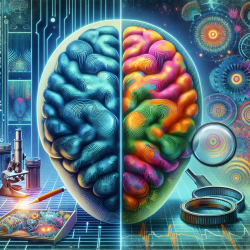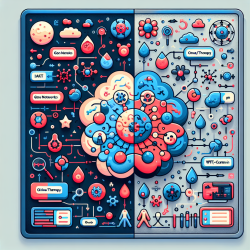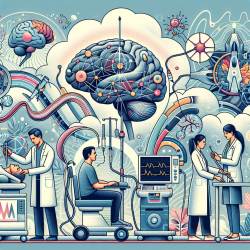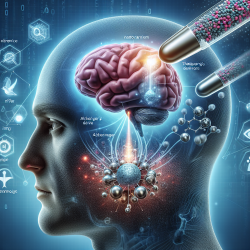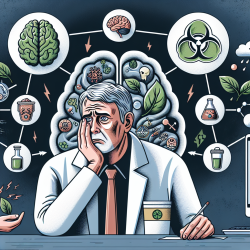Introduction
The transition from adolescence to young adulthood is a critical period marked by significant physiological, psychological, and neurodevelopmental changes. These changes often coincide with increased use of substances such as marijuana and alcohol, which can have profound effects on the developing brain. A recent study titled "Cortical thickness in adolescent marijuana and alcohol users: A three-year prospective study from adolescence to young adulthood" provides valuable insights into how these substances impact cortical development. As practitioners, understanding these effects can guide us in making data-driven decisions to support positive outcomes for children and adolescents.
Key Findings from the Study
The study followed adolescents with heavy marijuana and alcohol use and compared them to a control group with minimal substance use. It was found that:
- Adolescent marijuana and alcohol users exhibited thicker cortices across the brain, particularly in the frontal and parietal lobes.
- Increased cumulative marijuana use was associated with increased cortical thickness over a three-year period.
- Conversely, increased alcohol use was associated with decreased cortical thickness.
- Regular use of these substances during adolescence may interfere with normal brain development, potentially leading to neurobehavioral consequences.
Implications for Practitioners
As practitioners, these findings underscore the importance of early intervention and prevention strategies. Here are some actionable steps to consider:
- Educate and Raise Awareness: Share information about the potential impacts of substance use on brain development with adolescents, parents, and educators. Use data from studies like this to illustrate the long-term consequences of substance use.
- Implement Preventive Programs: Develop and support programs that focus on preventing substance use among adolescents. Emphasize the importance of maintaining a healthy lifestyle during critical developmental periods.
- Screen and Monitor: Regularly screen adolescents for substance use and provide appropriate referrals for those at risk. Monitoring can help identify early signs of substance use and allow for timely intervention.
- Support Recovery and Rehabilitation: For adolescents already engaged in substance use, provide access to recovery programs that focus on both behavioral and neurological rehabilitation.
Encouraging Further Research
While this study provides significant insights, it also highlights the need for further research to fully understand the long-term impacts of substance use on brain development. Practitioners are encouraged to stay informed about ongoing research and consider participating in studies that aim to explore these effects in more depth.
Conclusion
Understanding the impact of substance use on adolescent brain development is crucial for creating effective intervention strategies. By leveraging data from studies like this, practitioners can make informed decisions that promote healthy development and prevent long-term negative outcomes. Together, we can empower change and support the well-being of future generations.
To read the original research paper, please follow this link: Cortical thickness in adolescent marijuana and alcohol users: A three-year prospective study from adolescence to young adulthood.
